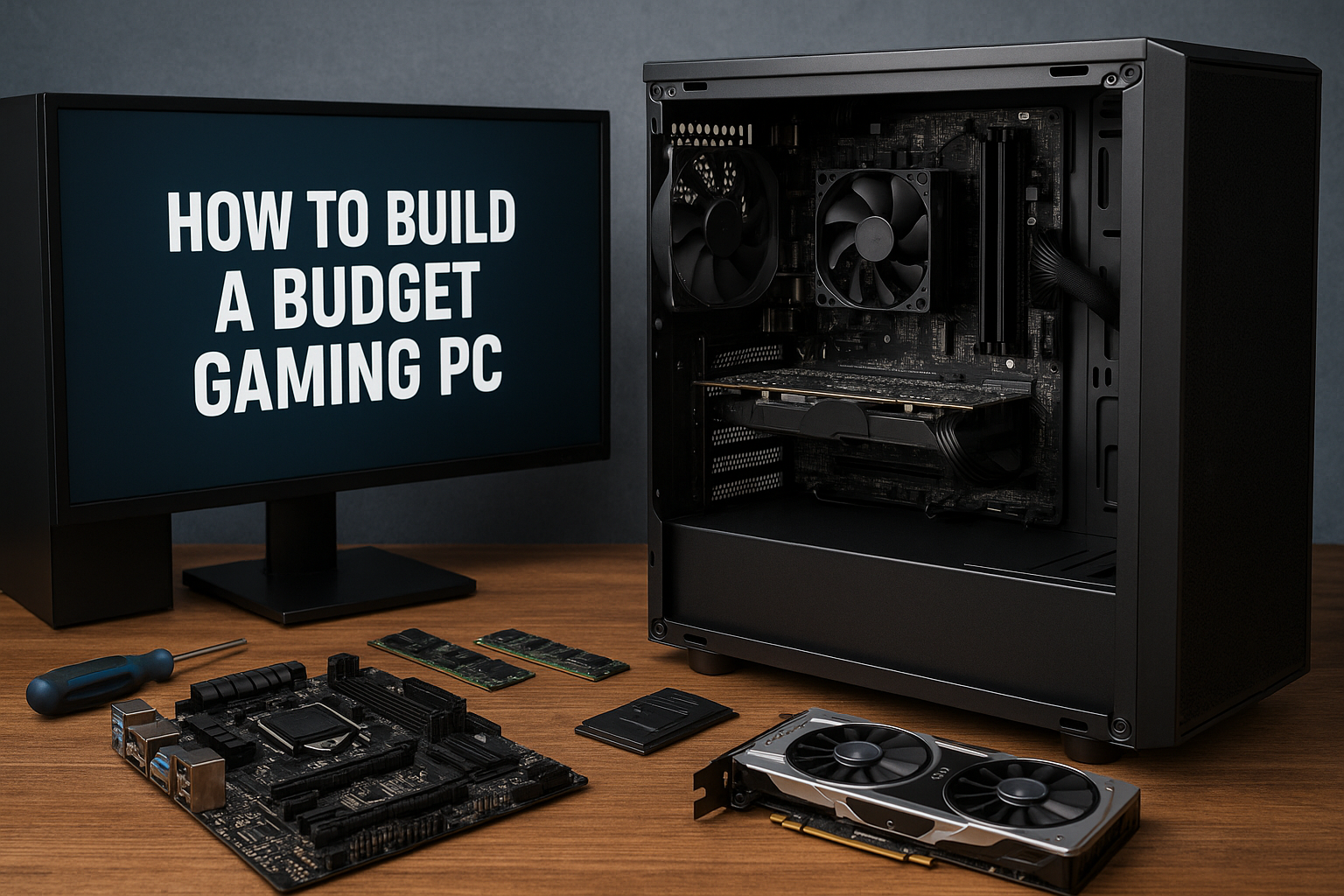Building a gaming PC on a budget may sound like a daunting task, especially with premium components often dominating the spotlight. However, with the right strategy, patience, and a clear understanding of your needs, it’s entirely possible to assemble a powerful and reliable gaming machine without breaking the bank. In this guide, you’ll learn step by step how to build a budget-friendly gaming PC that still delivers great performance in popular games.
Define Your Budget and Goals First
Before you even browse online stores or visit a tech shop, define your maximum budget. A good starting point for a budget gaming PC in 2025 is around $500 to $800 USD. It’s also crucial to define what you want to play. Are you aiming for eSports titles like Valorant, Fortnite, League of Legends, or more demanding games like Cyberpunk 2077 or Elden Ring?
Lower-end PCs can run most games at 1080p with medium settings if optimized correctly. Don’t aim for 4K gaming unless your budget is $1,500 or more — stick with 1080p or 1440p if possible.
The Essential Components
Every PC build consists of several essential parts. For a gaming setup, here’s what you’ll need:
1. Processor (CPU)
The CPU is the brain of the system. For a budget build, consider options like:
- AMD Ryzen 5 5600G – Comes with integrated graphics, good for ultra-budget builds.
- Intel Core i3-12100F – Excellent performance for the price when paired with a dedicated GPU.
Tip: Avoid older generations unless they are significantly discounted.
2. Graphics Card (GPU)
The GPU is crucial for gaming. Look for used or entry-level models like:
- NVIDIA GTX 1660 Super – Great 1080p performance.
- AMD Radeon RX 6600 – One of the best price-to-performance GPUs as of early 2025.
- Intel Arc A580 – An affordable newcomer with strong performance.
Don’t ignore the used market (more on this later). Prices can be 30–50% lower than buying new.
3. Motherboard
Choose a motherboard compatible with your CPU:
- B550 (for Ryzen) – Good features and upgrade potential.
- B660 (for Intel 12th/13th gen) – Offers PCIe 4.0 and decent VRMs.
Avoid premium models — focus on budget versions with essential features like M.2 NVMe support and enough USB ports.
4. RAM (Memory)
Modern games require at least 16GB DDR4 RAM. Two sticks of 8GB (dual-channel) is ideal for gaming. Speed matters, so aim for 3200MHz or higher if using Ryzen.
5. Storage
SSDs are now affordable. A good setup:
- 500GB NVMe SSD – For Windows and your most-played games.
- Optional: 1TB HDD – For backups or less frequently used files.
SSDs drastically reduce loading times, so don’t go back to HDD-only systems.
6. Power Supply Unit (PSU)
Never cheap out on the PSU. A reliable 500W–600W unit from a reputable brand like Corsair, EVGA, or Seasonic is enough for budget builds.
Look for 80+ Bronze certification at a minimum for efficiency and safety.
7. Case
Choose a case that supports your components and has good airflow. Budget models from Cooler Master, NZXT, or DeepCool offer decent features.
Make sure it fits your GPU and motherboard sizes (check form factors: ATX, mATX, Mini-ITX).
Bonus: Peripherals and Operating System
These aren’t part of the PC itself but are essential:
- Monitor: 1080p 60Hz is the baseline. Try to find a 75Hz or 144Hz if you play shooters.
- Keyboard and Mouse: Many bundles available for under $40.
- Operating System: Windows 10 or 11 can be installed for free (without activation, limited customization only), or consider Linux (like Pop!_OS) for a free alternative.
Save Money: Buy Used or Refurbished Parts
The second-hand market can be a goldmine. Consider buying:
- GPUs that are 1–2 generations old (e.g., GTX 1070, RX 580)
- Refurbished power supplies and cases
- Open-box motherboards and RAM
Use platforms like eBay, Reddit HardwareSwap, and local options like Facebook Marketplace or Craigslist. Just ensure you test everything and ask for proof of condition.
Optimization Tips for Better Gaming Performance
You can improve your gaming performance even on a budget build:
- Overclock your GPU (if allowed by your card)
- Lower in-game settings: Start with medium or low for demanding titles
- Use game boosters or lightweight antivirus software
- Keep your system clean from bloatware and unnecessary background processes
Avoiding Common Mistakes
Here are some rookie errors to avoid:
- Not checking compatibility (use tools like PCPartPicker)
- Underestimating PSU wattage
- Buying a weak CPU-GPU combo that bottlenecks each other
- Skipping airflow — poor cooling can throttle performance
Pre-Built PCs vs Custom Builds
Sometimes pre-builts offer better deals, especially during sales events like Black Friday or Prime Day. If you’re not confident in building, a pre-built with a decent GPU might cost similar or even less than a DIY setup.
Still, building your own PC teaches you valuable skills and allows complete control over the components.
Final Thoughts: Yes, You Can Game on a Budget
You don’t need to spend thousands to enjoy great games. By choosing components wisely, embracing used parts, and understanding your real gaming needs, building a budget gaming PC becomes not just possible, but incredibly rewarding. It’s all about value per dollar — not just flashy specs.
Take your time, follow the trends, and you’ll be surprised at how much power you can get from a modest investment.

